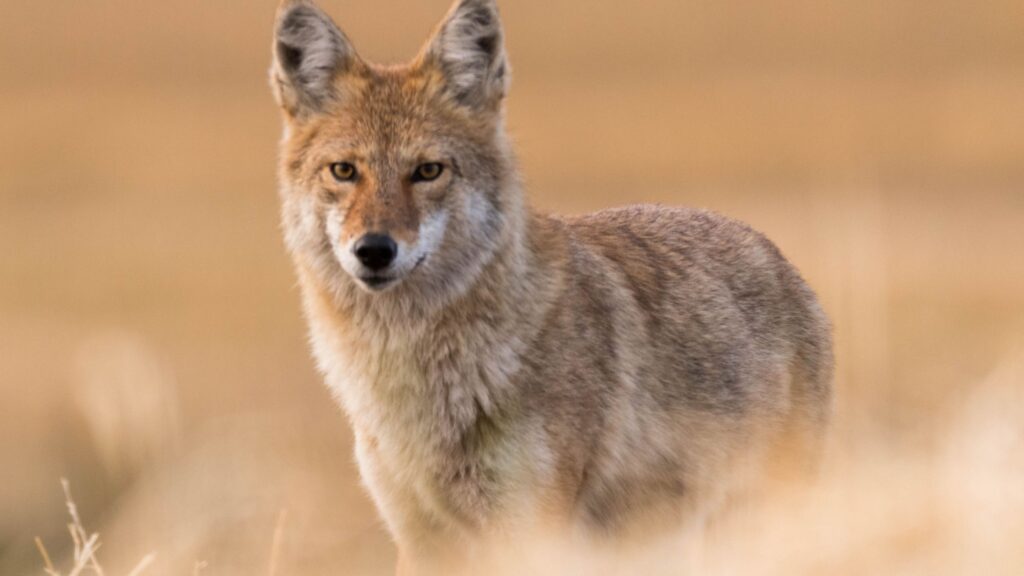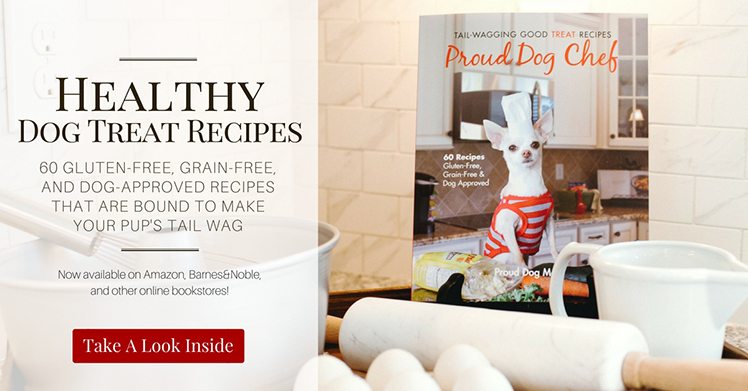Pet parents beware: Coyote attacks can – and do – happen.
Okay, I know what you’re thinking: “Coyotes?” “There are no coyotes near me!” But, gone are the days of coyotes only roaming the prairies and forests of the west. Today, coyotes call every state in the United States (except Hawaii) home. They can be found everywhere from coast to coast, in rural, suburban, and urban settings. So, you could meet up with one on a walk, hike, at the park, or even in your own backyard!
Why? Humans!
Human land expansion and development have taken over so much of the wide-open natural landscape which has ultimately forced coyotes (and other wildlife) to move on. Additionally, human hunting habits have thinned out populations of the coyotes’ natural predators, like the wolf.
About Coyotes
Get this: Coyotes are a member of the dog family. So, as you may imagine, they’re very attracted to our pet dogs. Likewise, our dogs are attracted to them. They can even mate!
But, it’s important we keep our pups far away to avoid attacks. Coyotes are skilled hunters who are resourceful and masters at adapting. They can stalk and subsequently snatch their prey in a flash. They’ve even been known to grab dogs right from their leash on a walk. They’re not afraid of your dog, but they are cautious of humans. So, keep Fido close.
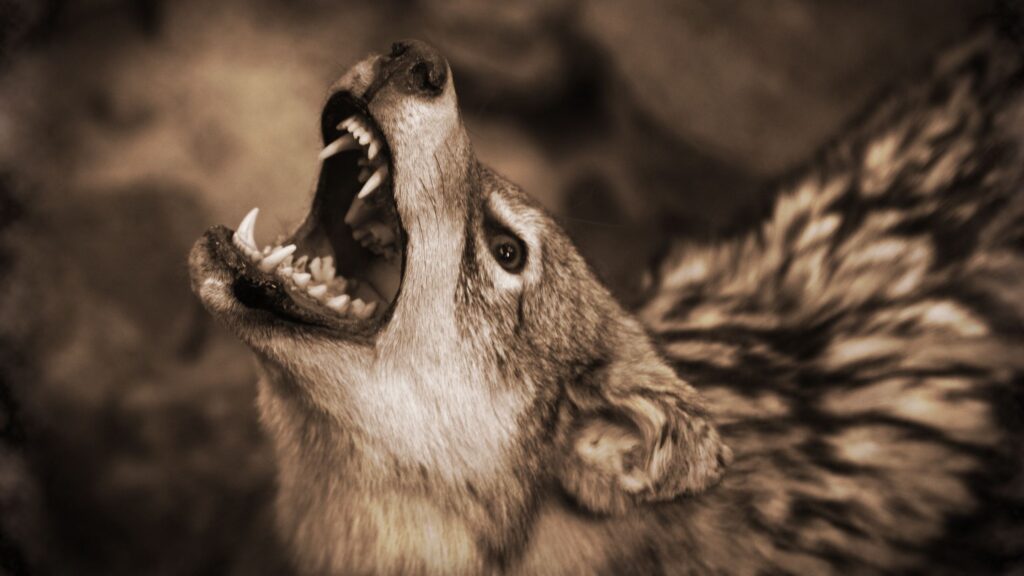
Some quick facts about coyotes:
- Coyotes look similar to a German Shepherd, but they have narrow snouts, long triangular ears, yellow eyes, long course grayish-brown or yellowish-brown fur on their upper body with whitish fur underneath, and a long bushy pointy tail (usually with a black tip).
- If you’re ever not sure who is running – dog or coyote – check out his tail. Dogs run with their tails up and coyotes run with theirs down.
- Their height reaches 24″ to the shoulder, and they weigh in at 20-50 pounds.
- Eastern coyotes are known to be larger.
- Their formal name is Canis latrans.
- They are omnivores. Although coyotes prefer to eat smaller animals (like rats, raccoons, rabbits, and squirrels), when those choices aren’t available, they will eat fruits, seeds, and plants … or whatever they can scavenge.
- Lifespan in the wild is 10-14 years, but in captivity can be up to 20 years.
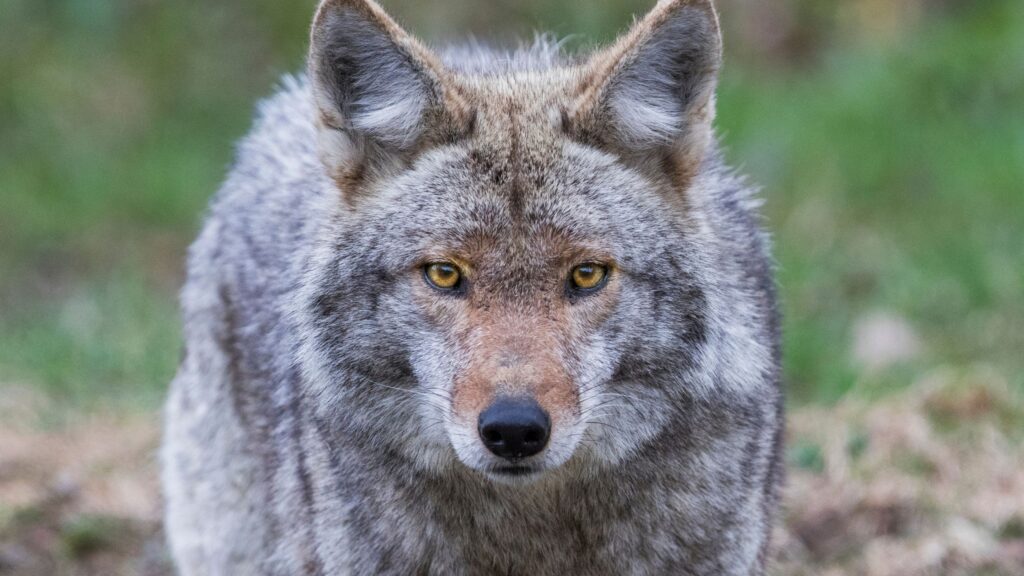
The Hunt
Coyotes hunt alone, in pairs, or with a family pack. To take down larger prey, there are usually family members standing by. They also prefer to hunt at night, but that doesn’t mean you can’t find them hunting during the day.
Mating
Coyotes mate for life or until that partner dies. Breeding season is from late December until April, and pups are born in approximately 63 days. Litter size is normally 4-7 pups, but they can be as few as 1 or as many as 19.
Communication
They communicate through body language, scents, and sounds. Coyotes are often heard yipping, howling, and/or barking. As members of the dog family, that they are master sniffers (no surprise here).
Staying Safe From Coyotes: Your Backyard
Stay Alert
Keep an eye on your dog at all times when Fido is outside, especially at night or during the early morning hours. Yes, even if your yard is fenced! Coyotes can easily climb fences as high as 7 feet tall or dig their way underneath. The average backyard fence is 4-6 feet high, which isn’t much of a challenge for the coyote.
Let There Be Light
Coyotes don’t like bright lights. Before you let your dog outside, flip the switch to your outdoor lighting. Make it as bright as possible and keep an eye on your pooch. If you don’t have exterior lighting, use the brightest flashlight you have on hand. Try to set your lights so that you can also see the rear and perimeter of your yard. If there is a stalker nearby, he will try to hide. He won’t want to be under a light.
Scoop That Poop
Coyotes have superior scent sniffing ability and they are attracted to dog poop. So, when Fido poops in your yard, give it a quick scoop and toss it. Otherwise, you could be unintentionally setting out the welcome mat for unwanted visitors.
Eliminate Hiding Spots: Keep Your Trees and Shrubs Groomed
As I mentioned above, for a coyote (or any other predator) to stalk his prey, he’ll need to scope out a hiding spot. Keep your trees and shrubs pruned so the branches don’t blanket the ground. Why? This will eliminate potential hiding spots or places a coyote might even decide to settle into and make a den. When you look around your yard, you want to be able to see under every bush and tree. Keep things pruned. Avoid thick foliage.
Decks, Porches, and Sheds
Close off any open sections or areas underneath the structure which could provide a cozy place for a coyote to set up a den.
Do Not Feed Coyotes
Coyotes have a natural distrust of humans and that’s the way we need to keep it. Feeding a coyote, or any wild animal, will make him less fearful of you, ultimately giving him the confidence to come closer. So, sneaking a few yummy bites may seem harmless. But, you’re unintentionally encouraging a repeat visitor, which can become dangerous for your dog.
Don’t Leave Food and Water Outside
Coyotes are just trying to survive, and if they find a backyard with a ready food source, that’s where they’re going to want to come.
Fruit Trees, Bird Feeders, Bird Baths
Although coyotes would prefer a meal of animal protein, they will eat fruits or seeds that have landed on the ground. Remove the temptation by keeping the ground under fruit trees and bird feeders clear. Toss the fruit and rake up all seeds.
Coyotes aren’t the only ones who may come calling! Wildlife, like squirrels, raccoons, and rats etc., are attracted to backyard food sources as well.
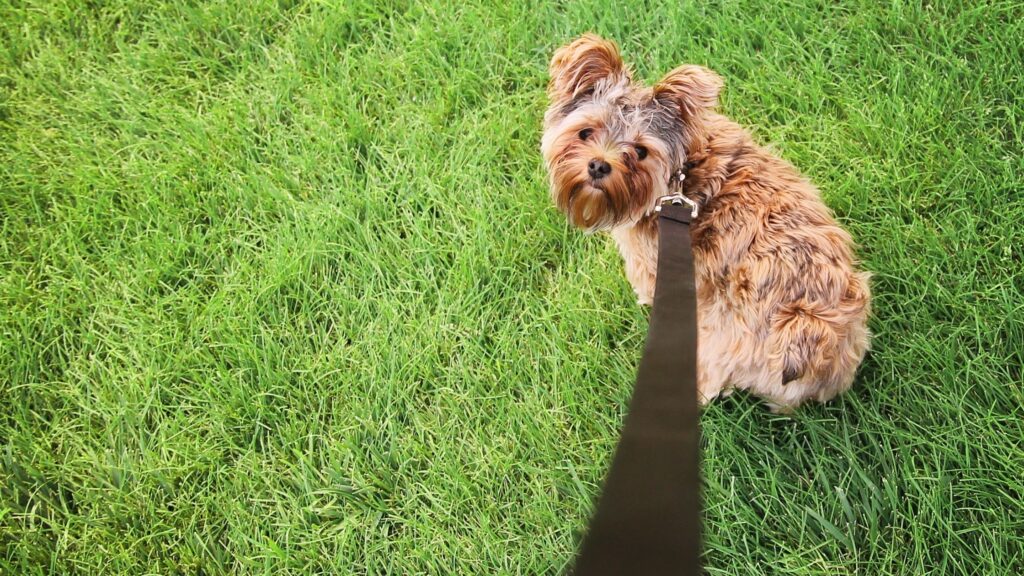
Walking Your Dog
Timing
Use extra caution when walking Fido at dusk or dawn, as these are the most active times for coyotes to be in search of food. Although they are night hunters by nature, it’s not uncommon to see them during the daylight hours – especially in winter.
Leash
Using a leash no longer than 6 feet is the safest way to walk your dog and maintain control. Shorter leashes keep your pooch closer to your side. Extra-long extendable leashes can let your pup walk upward of 25 feet in front of you, giving a predator more opportunity and confidence to attack. A coyote can grab your pet and get away in a flash!
Coyote Encounter
If you happen to run into a coyote in your backyard, on a walk, or any other place, experts say the best way to get them to move on is by hazing.
- Start by making yourself look as big as possible by waving your arms and hands above your head and yell. “Get out of here coyote!” … or anything else you want to yell. But do it with authority.
- Make as much noise as you can. Blow a whistle or air horn, bang pots, shake a can with pennies or pebbles, etc. Do anything that’s going to make lots of noise and startle the coyote.
- If you’re in your yard then spray him with the garden hose or throw sticks and stones in his direction. Don’t throw anything at him, just in his direction.
Don’t get too close. If he doesn’t retreat, back away slowly and maintain eye contact.
- NEVER
- Turn your back on a coyote.
- Haze a coyote that appears sick, has no escape route, or with her pups
- Run or let your dog run. You can’t outrun a coyote – they can reach speeds of 40mph. Running will only trigger him to see you as prey – and run after you!
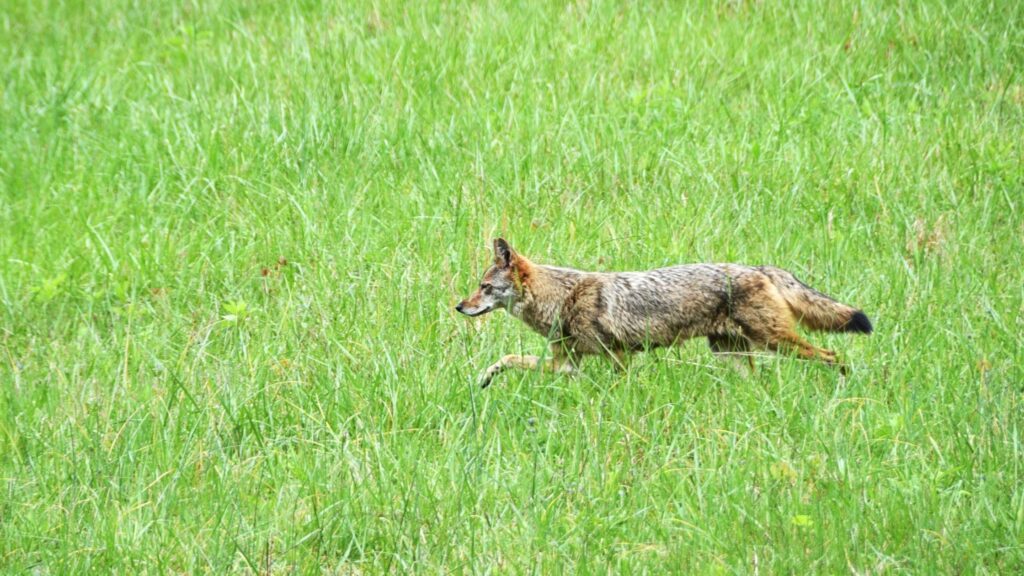
How to Haze a Coyote:
Watch This Informative Video By Public Health Madison & Dane County, Wisconsin.

